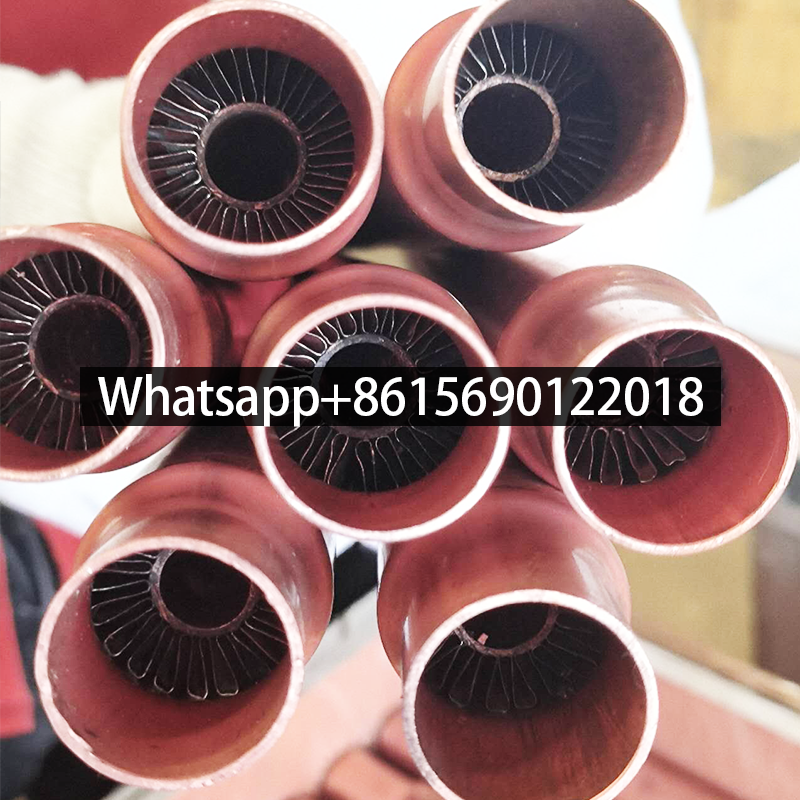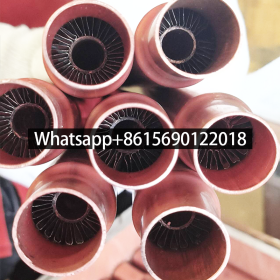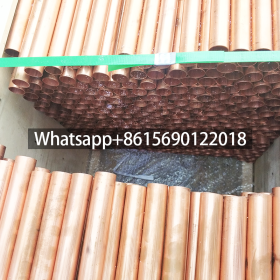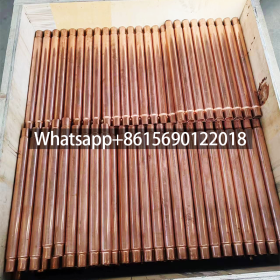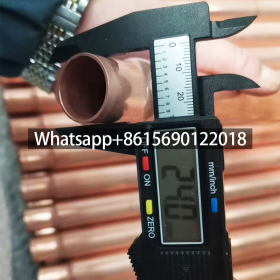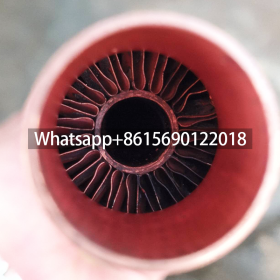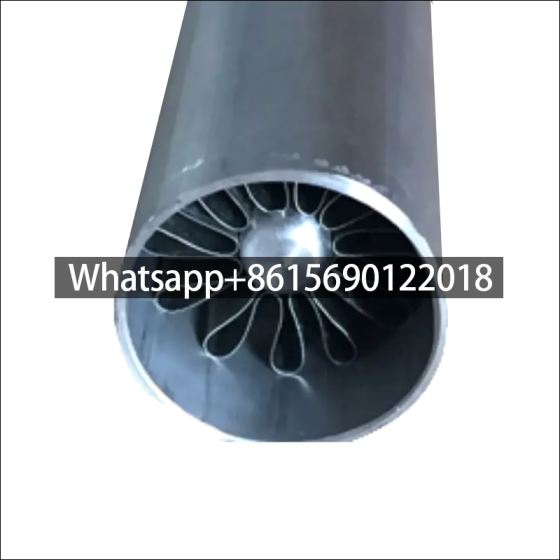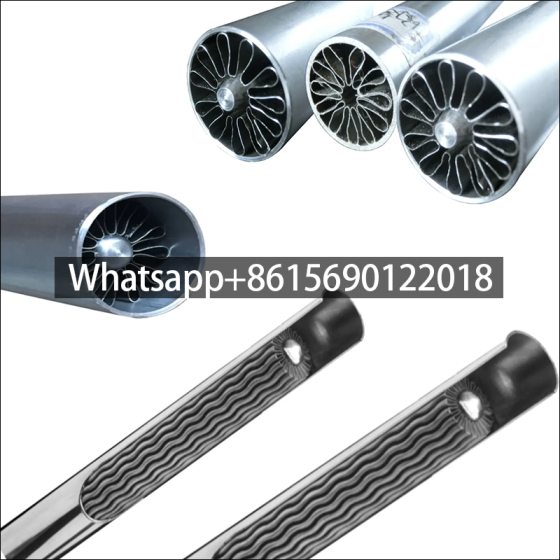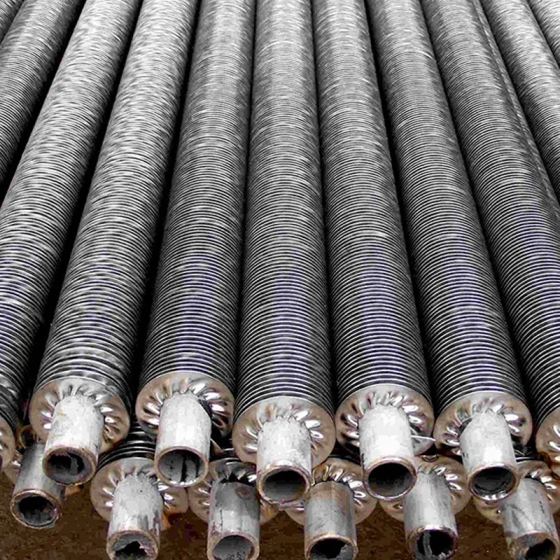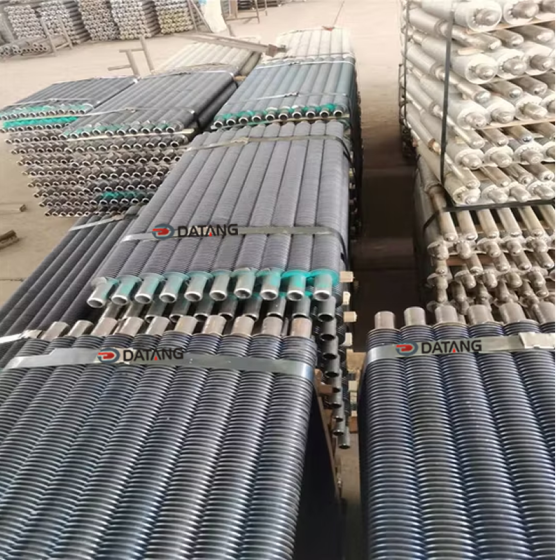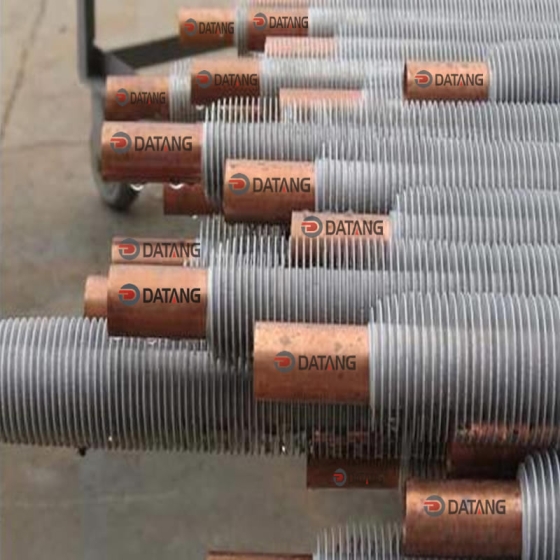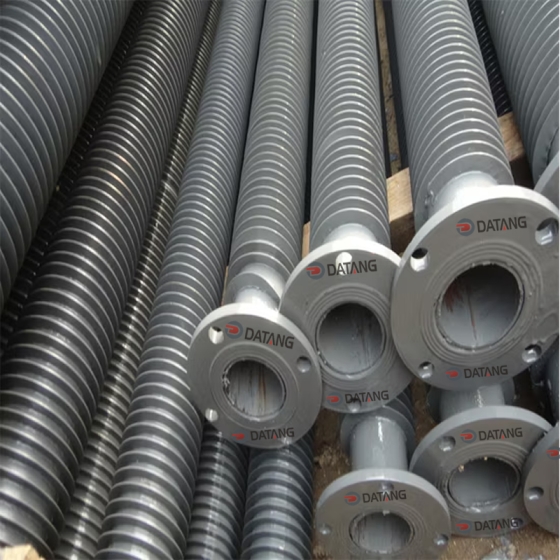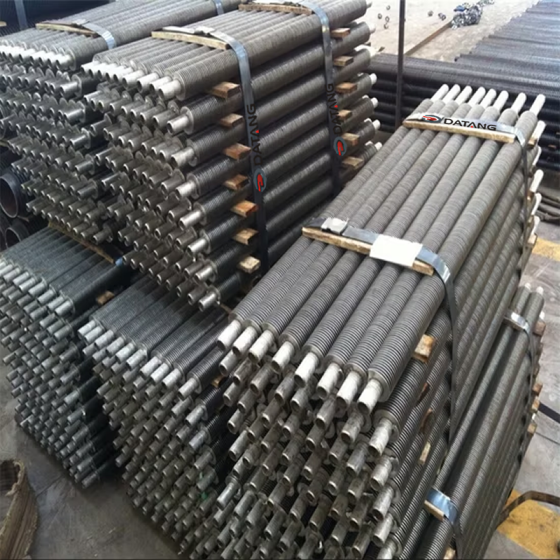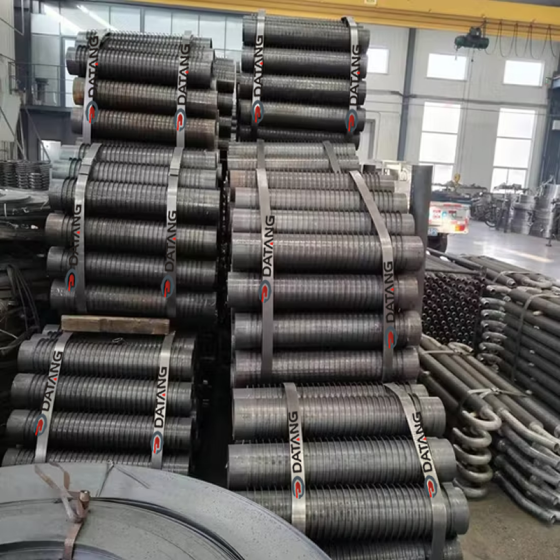What is an internally finned tube?
An Internally finned tube is a heat transfer enhancement element with a fin structure processed on the inner surface of the tube. It significantly improves the heat transfer efficiency by increasing the contact area between the fluid and the tube wall and guiding turbulent flow.
Unique Internal, Spiraled Fins
Our revolutionary, Internally Finned tubes deliver the same long life and superior heat transfer capability as our Straight-Wall tubes, they literally pay for themselves. By simultaneously stirring the gas flame and increasing the inside surface area to capture more heat, these finned tubes reduce fuel consumption by approximately 10%.
Only Datang offers a radiant tube with internally-spiraled fins capable of operating at temperatures to 2450°F (1340°C).
Proven Cost Savings
Datang conducted a yearlong test in a pusher furnace. On a conservative basis, the results showed a 10.4% metered fuel savings. Rated at 600,000 BTUs per hour, the furnace was operated at high fire approximately 60% of the available time. A savings of over 300,000 cubic feet of gas resulted in an annual savings exceeding $1,220. Use your own figures and see the savings Datang Finned Tubes can deliver for you!
Internally Finned Tube Dimensions
| U.S. | Metric | ||||||
|---|---|---|---|---|---|---|---|
| Tube (OD) | Max Nozzle | Fin Height | Twist Rates (per rev.) |
Tube (OD) | Max Nozzle | Fin Height | Twist Rates (per rev.) |
| 2-3⁄8” (12 Fins) |
1-7⁄16“ | 1⁄4 inch | 12 inches | 60 mm | 37 mm | 6.4 mm | 305 mm |
| 2-3⁄4” (18 Fins) |
1-9⁄16“ | 3⁄8 inch | 18 inches | 70 mm | 40 mm | 9.5 mm | 457 mm |
| 3-1⁄4” (15 Fins) |
2-3⁄8“ | 1⁄4 inch | 12 inches | 83 mm | 60 mm | 6.4 mm | 305 mm |
| 4-1⁄2” (18 Fins) |
3-5⁄16“ | 5⁄16 inch | 20 inches | 114 mm | 84 mm | 7.9 mm | 508 mm |
| Special fin heights and twist rates available upon request. | |||||||
Note: Please call to discuss dimensional
capability for critical applications
The internal finned tube breaks through the heat transfer limit of traditional light tubes through the synergistic effect of structure-induced turbulence and area expansion. Its principle is widely used in scenarios that require efficient and compact heat exchange.
When designing, it is necessary to balance the heat transfer gain and flow resistance, and optimize the fin parameters (height, spacing, shape) in combination with specific working conditions (such as fluid properties and heat load).
The fins on the inner surface of the tube can take various forms, such as helical, straight, or spiral. The fins are usually made of a high-conductivity material, such as copper or aluminum, and are tightly bonded to the inner surface of the tube to maximize heat transfer.
Inner finned tubes are commonly used in applications where heat transfer is critical, such as in air conditioning and refrigeration systems, power plants, and chemical processing plants. They are also used in some heat exchangers for oil cooling or in boilers to increase the heat transfer efficiency of the tube.
Inner finned tube construction:
Inner finned tubes consist of a base tube with fins on the inner surface. The fins are made of a high thermal conductivity material, such as copper or aluminum, and are tightly bonded to the base tube. The fins can be straight, helical, or spiral in shape, and they typically have a height of 0.5 to 1.5 times the diameter of the tube.
Inner finned tube working principle:
The working principle of inner finned tubes is based on the fact that heat transfer between fluids is proportional to the surface area available for heat transfer. By adding fins to the inner surface of the tube, the surface area available for heat transfer is increased, and the heat transfer rate is enhanced. The fins create turbulence in the fluid flow, which increases the rate of heat transfer by enhancing the mixing of the fluid and reducing the thickness of the boundary layer.
Inner finned tube applications:
Inner finned tubes are commonly used in heat exchangers and boilers, where they are used to increase the heat transfer efficiency of the tube. They are also used in air conditioning and refrigeration systems, power plants, and chemical processing plants. Some common applications include:
- Oil coolers
- Steam condensers
- Evaporators
Process heaters
- Waste heat recovery systems
- Heat recovery steam generators (HRSGs)
Inner finned tube advantages:
Inner finned tubes offer several advantages over plain tubes, including:
Higher heat transfer efficiency: The fins increase the surface area available for heat transfer, which enhances the rate of heat transfer.
Compact size: Inner finned tubes can achieve the same heat transfer performance as plain tubes with a smaller size, which is important in applications where space is limited.
Reduced fouling: The fins can disrupt the formation of fouling layers on the tube surface, which reduces the frequency of cleaning and maintenance.
Improved thermal performance: Inner finned tubes can achieve a higher thermal performance than plain tubes with the same fluid flow rate and heat transfer area.
Inner finned tube disadvantages:
Some potential disadvantages of inner finned tubes include:
Higher cost: Inner finned tubes can be more expensive to manufacture than plain tubes.
Increased pressure drop: The fins can increase the pressure drop in the fluid flow, which can increase the pumping power required.
Susceptible to damage: The fins on the inner surface of the tube can be susceptible to damage from abrasive particles or erosion.
In order to forward you a promt offer we would be pleased to receive you detailed enquiry including:
• Base tube material
• Base tube size (OD x WT x Length)
• Fin material
• Fin type
• Fin diameter or height
• Fin thickness
• Fins per inch, meter or fin pitch
• Lenght of plain, unfinned ends
• Finned Tube Quantity
(Additional fabrication, such as bend or weld the tubes into tubeplate or assembly)
Advantages of internal finned tubes
Internal finned tubes have shown significant advantages in multiple industrial scenarios through unique design and technology, which are mainly reflected in the following core characteristics:
1. The heat exchange efficiency of internal finned tubes is doubled
–Internal finned tubes expand the heat transfer area :
Through the inner wall fin structure, the effective heat transfer area can reach 2~5 times that of the light tube, directly improving the heat transfer capacity per unit time.
–Induced turbulence effect :
The fins destroy the laminar state of the fluid, enhance turbulent mixing, and increase the convective heat transfer coefficient by 30%~50%.
–Thinning of thermal boundary layer :
The fin disturbance reduces the stable development of the fluid boundary layer and accelerates the heat exchange rate between the high-temperature fluid and the tube wall.
2. Compact internal finned tube structure
–High space utilization :
Under the same heat exchange capacity, the volume is reduced by 30%~50% compared with ordinary light tube heat exchangers, which is suitable for space-constrained scenarios such as automobile engine compartments and microelectronics heat dissipation.
–Flexible integration:
The modular design supports multiple tubes in series/parallel to meet the needs of large-scale heat exchange (such as chemical reactors and waste heat recovery systems).
3. Strong adaptability of internal finned tube materials
–Corrosion resistance:
The base tubes made of stainless steel, copper and other materials combined with anti-corrosion coatings (such as galvanizing and anodizing) can operate stably for a long time in harsh environments such as high salt spray and acidic media.
–High temperature and high pressure tolerance:
The high-frequency welding process enhances the bonding strength between the fins and the base tubes, with an applicable temperature range of -50℃~650℃ and a maximum pressure bearing capacity of 40MPa.
4. Mature manufacturing process for internal finned tubes
–Various molding technologies:
Support mechanical extrusion, high-frequency welding, aluminum extrusion and other processes to meet the needs of different materials (such as copper, stainless steel, alloy steel).
–Combined reliability:
The welding rate of high-frequency welded fins is ≥95%, and the aluminum extrusion process achieves seamless bonding between the fins and the base tubes, ensuring efficient heat conduction and structural strength.
5. Energy saving and maintenance advantages of internal finned tubes
–Low energy consumption design:
The optimized flow path and fin layout reduce pumping energy consumption, and the comprehensive energy efficiency is 20%~40% higher than that of traditional light tubes.
–Easy to clean:
Turbulent scouring reduces dirt deposition, and the simple structure makes it easy to disassemble and clean (such as regular maintenance of chemical reactors).
 dtfinnedtube.com
dtfinnedtube.com

